Having Smoke alarms and carbon monoxide detector alarms is not enough. All your setup will go to waste if you cannot sense danger at the time of need. Hence, placing them in the right spots in your house is extremely important.
This article mainly focused on the essential places you should set up in your home. We have provided a separate elaborated section for the smoke-detecting alarms. At last, we have given some of the most important things you should take care of while utilizing them.
Placing Smoke Alarms And CO Detectors In Your Home
Quick Navigation
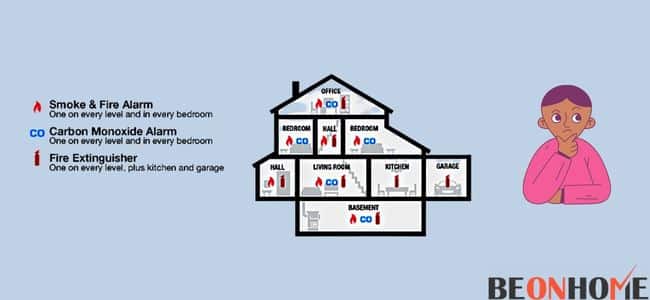
Having a smoke alarm and Co detectors has become essential for the house. Since carbon monoxide is a little lighter than air, the sensors should be positioned on a wall higher.
The best place is often on the ceiling. The same goes for the smoke detector, as smoke also rises with the air. Depending on the size of the home, and the cost of the detectors, every place should be given detectors smartly.
Remember that you should never set them near a fireplace. It’s safe to keep them out of the path of pets and small children. You should also ensure that the alarm sounds are audible wherever it has been placed.
1. In The Kitchen
The kitchen is the most common place for fires. The reason behind the area where there are many flammable fluids stored. It may get activated and give false alarm signals.
Remember that you should place the alarms away from the cooking material. You can put them at 12 feet high on the wall.
2. Outside Bedrooms
You should place smoke sensors not only inside the bedroom. Placing them outside the bedroom regions is also essential, for example, in the hallway.
If you have only a few smoke detectors, you should position them everywhere. You should place them such that everyone sleeping can hear the alarm.
3. Basements
You should not skip adding a smoke sensor in the basement. Interconnecting is ideal for warning you in case of smoke in the basement.
In many cases, you may not even be able to listen to the alarm. You get to know when the fire circulates to other areas.
4. At the Entrance
If there are any remaining smoke sensors, you should not miss installing them at the entrance. This is also very helpful in your home if you have guards. They can run for help as soon as they hear the alarm.
The alarm here should also be interconnected to the other smoke alarms of the household. Fire can be detected and alerted even if it has occurred anywhere in the house.
5. Garage
Garages are also one of the most critical places for placing smoke detectors. The smoke detectors can be placed above at least 14 feet higher.
Also, you should keep in mind various combustible fluids and other materials. These things make the garage a susceptible area to fire.
6. Smoke Room
You must keep smoke detectors if you have any smoking rooms in your home. The smoking rooms are often susceptible to fires because of simmering cigarettes. The smoke sensor alarm should usually be a little away from the smoking area.
Essential Things to Consider While Installing
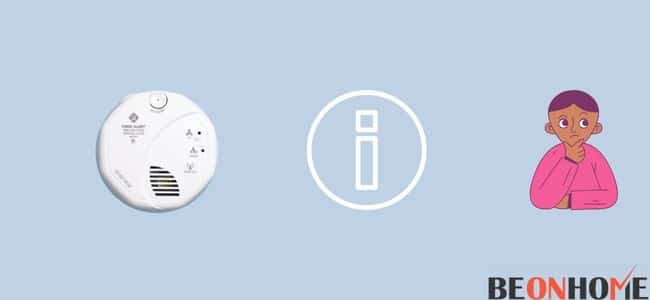
As discussed in the article, smoke alarms are little or more similar to CO detectors. But they are a little bit different in their approaches. Placing them in the correct spots in your home is one of the things you should give particular importance to.
Let us see some of the important things you should consider with placing smoke alarms:
- Introduce a smoke alarm inside every bedroom of your home. It should be outside of the sleeping region. Make sure it is on every house layer, constituting the basement.
- You can install alarms in the living room or near the stairway if the layer lacks any bedrooms. Install them at the upper level, or you can also in both locations.
- Smoke warnings installed in the cellar can be installed on the roof. It can also be installed on the floor of the notches directing to the next level.
- You should install Smoke alarms at least 10 feet which are 3 meters from kitchen appliances. This is to lessen untrue alarms while cooking.
- You can also mount smoke alarms at elevated heights on the walls or roofs. Wall-mounted warnings need not be established more than 10 inches from the ceiling. As we know, smoke rises, and this thing will work.
- If your ceilings are pitched, you can set up the smoke alarm within 4 feet of the peak. You have to remember that it should not be within the pinnacle of the peak.
- You should not smoke alarms near windows, ducts, or doors. This is because drafts may interfere with their system.
- Remember that you should never paint or color smoke alarms. So you should remove them in case your home is being painted. Paint, decorative items, or stickers could restrain the notices from functioning.
- Place the smoke alarms in your home that can be interconnected. This serves your best performance. It also helps in better protection, as when anyone’s alarm sounds, they do too. Interconnection between them can be accomplished by hard wiring. This is also possible through wireless technology. In this case, you have to use alarms from the same manufacturer.
- Two types of Smoke detection alarms are available in the market. These are ionization and photoelectric. The former is mainly more reactive to flaming fires. The latter one is mostly better responsive to simmering fires. Therefore you should place them according to their types. For example, a garage should possess an ionization type. However, we recommend, for the best safety, combination of ionization-photoelectric alarms. They are also recognized as dual-detector smoke alarms.
How Many Should CO Detectors be Placed?
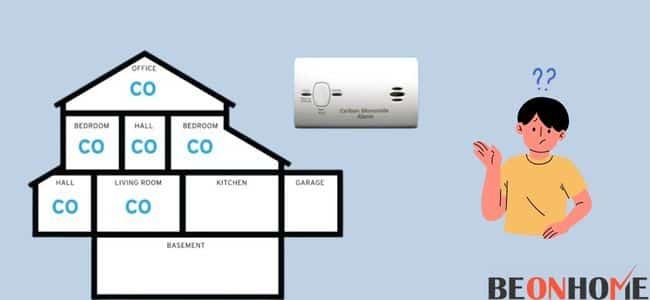
So the question here is how many carbon monoxide detectors are proper? What is the right place to install the same? The valid answer to this depends on your home.
1. The Right Number
The correct number depends on the number of grounds and bedrooms in your residence. It also depends on the quantity of gas-powered equipment you have.
2. The Right Place To Set Up
The NFPA advises establishing a CO warning on every degree of your residence. It should be inside each bedroom.
You should also ensure that CO sensors are set up near the garages. In any situation, it will help when a vehicle is left running.
However, not every area is suitable for installing a CO alarm. The additional spots can establish false warnings or preclude CO alarms from working. It can prevent it from identifying the dangerous degrees of CO in your home.
We have summed up all the places you should avoid while setting up.
- Extremely close to any fuel-burning accessory, at least 15 feet distant.
- Damp and humid areas like the bathrooms.
- In immediate and direct sunlight
- There is very much airflow, like close to a fan or vent.
- Most grandly, don’t skip checking household smoke and CO detectors. They should be tested at least one time a month. You should alter the batteries after every six months. This helps to ensure your home is protected 24/7.
Final Talk
Here we have seen that the main factors about installing both devices in your home depend on your home. You should consider the size and levels of your home. If we know the commonplace dangers, it will be a smart way to install the alarms. Hearing the alarms is also one of the essential things you should take care of. Interconnecting all household alarms is the best option for better safety. Little research and knowledge can help us do the work much more efficiently.

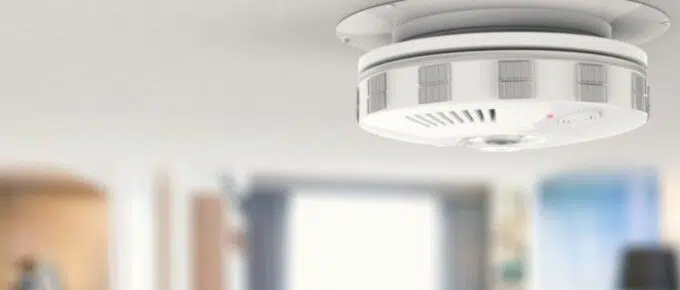
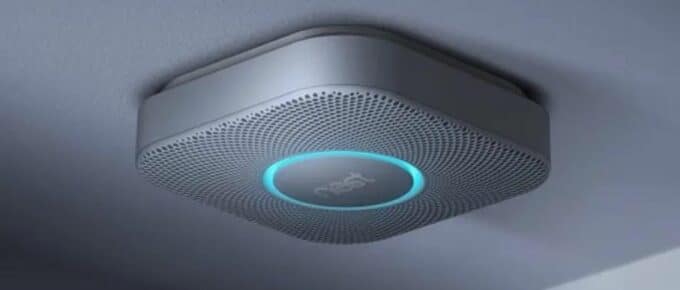
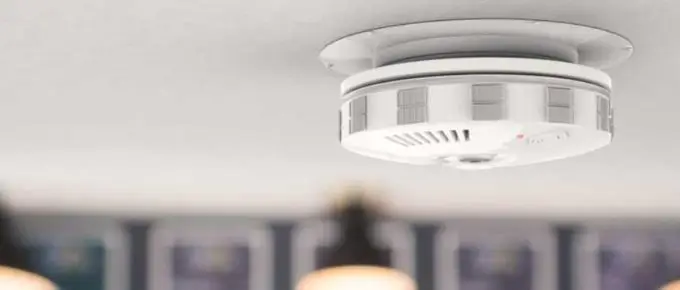


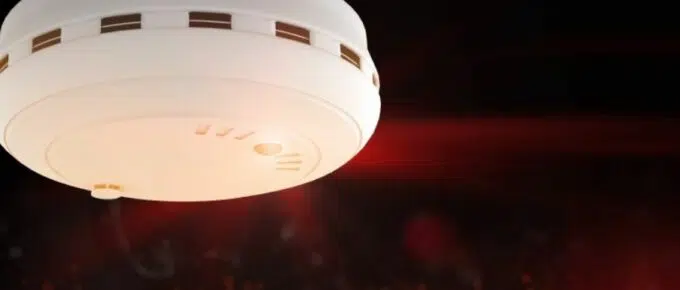
Leave a Reply